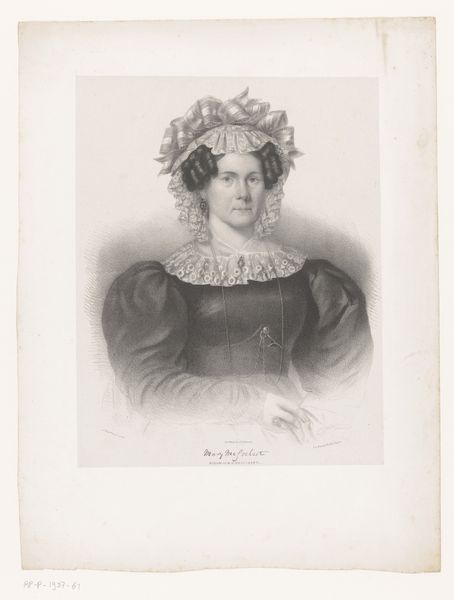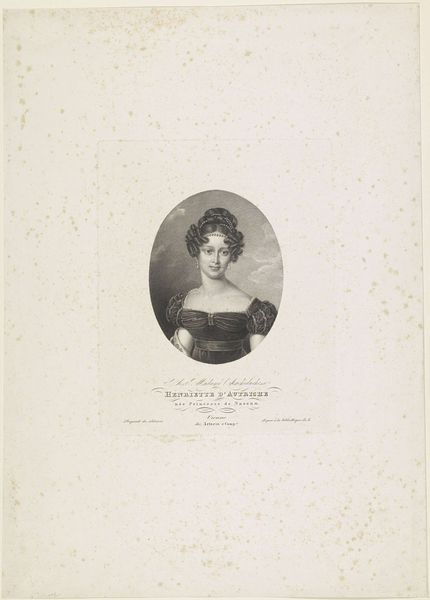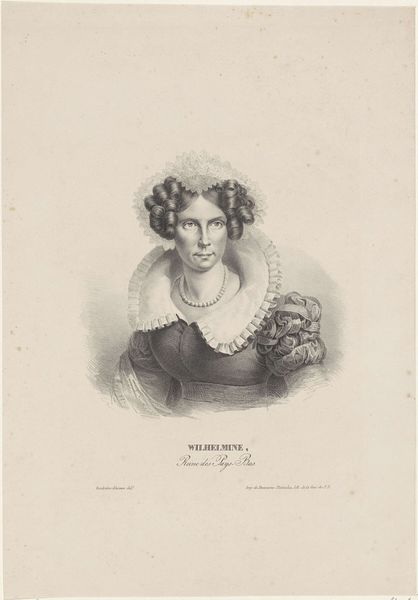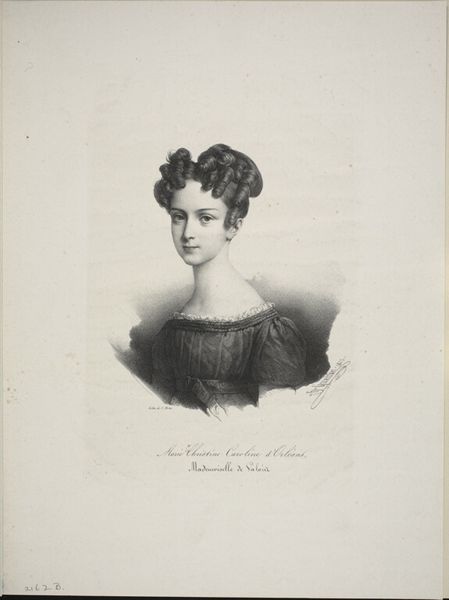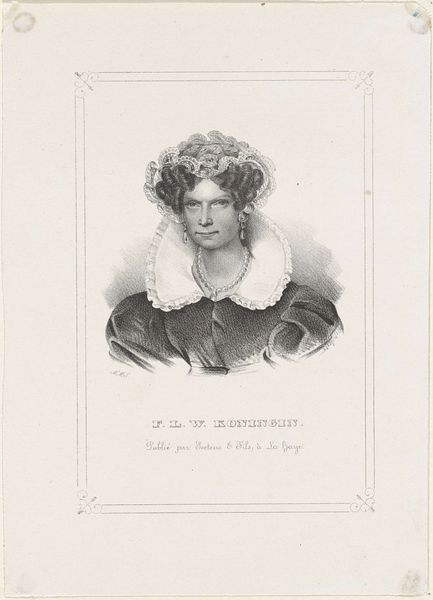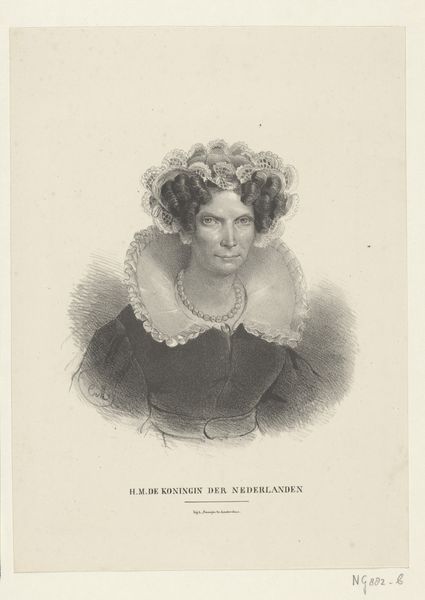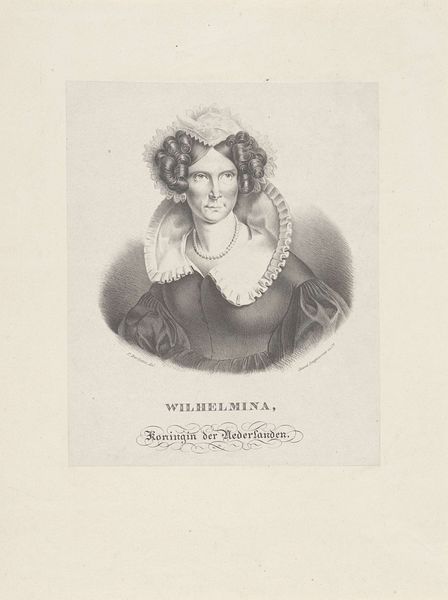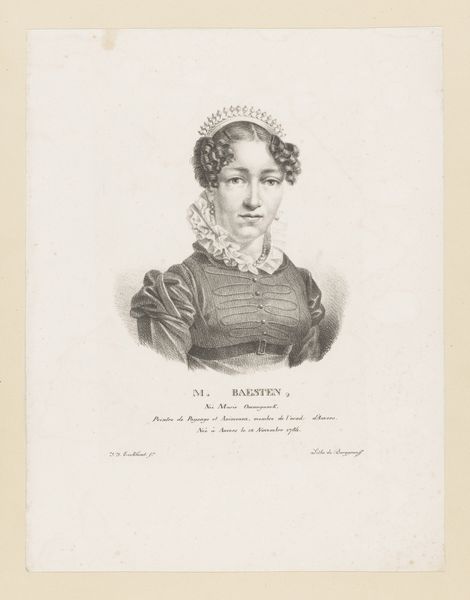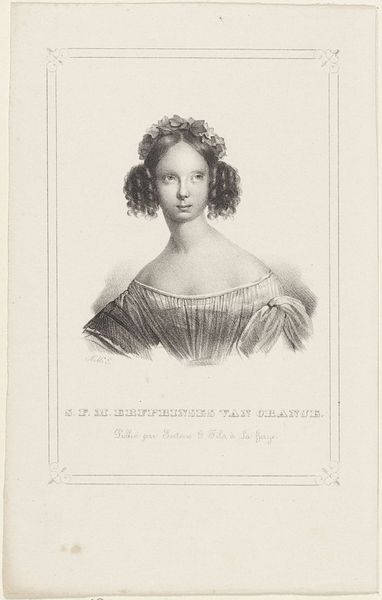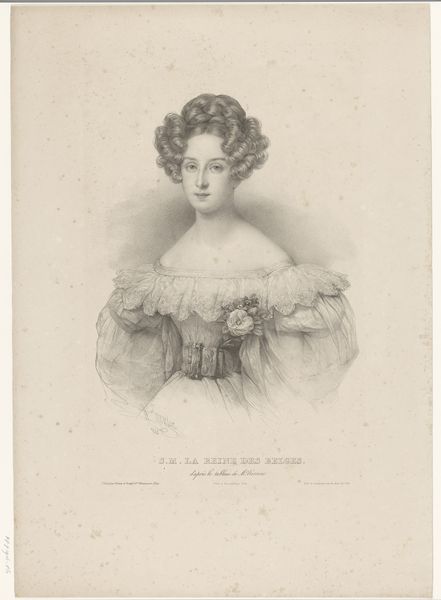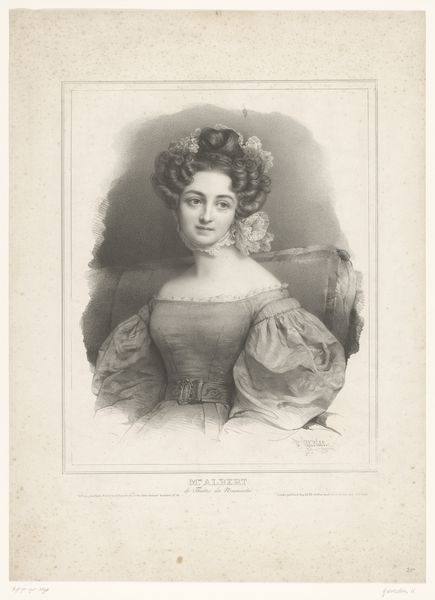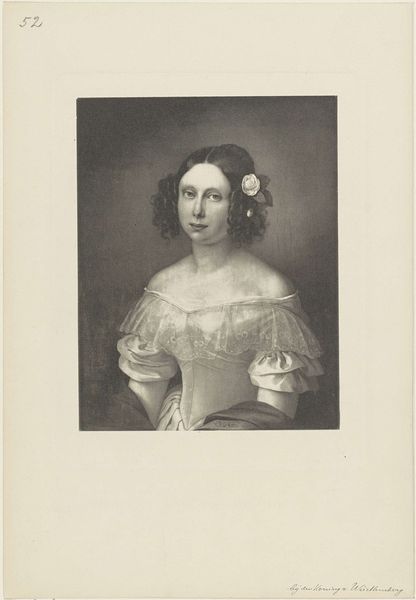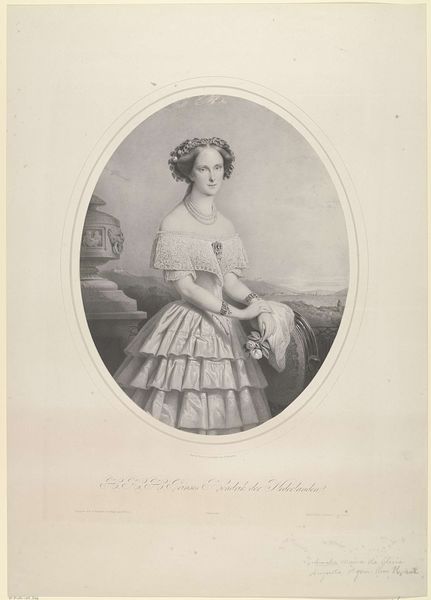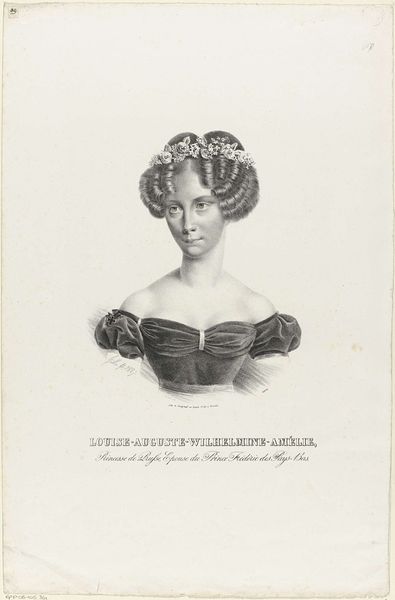
print, etching, engraving
#
portrait
#
neoclacissism
# print
#
etching
#
pencil sketch
#
old engraving style
#
19th century
#
engraving
Dimensions: height 567 mm, width 423 mm
Copyright: Rijks Museum: Open Domain
This portrait of Wilhelmina van Pruisen was created by Jean-Baptiste van der Hulst in the early 19th century. The most prominent features are the Queen's elaborate lace headwear and the high, ruffled collar. These elements speak volumes about status and the performance of power. Consider the ruff, that exaggerated collar. It first emerged in the 16th century, a symbol of aristocratic detachment and wealth. Think of Spanish court portraits—stiff, formal, and undeniably powerful. The ruff creates a visual barrier, suggesting distance. Yet, it also frames the face, drawing attention and suggesting a certain vulnerability. Now, fast forward to Wilhelmina. The ruff has evolved, softened, yet the underlying message of authority remains. These garments and adornments become a kind of armor, both shielding and proclaiming the wearer's position. There is an emotional tension here, between display and concealment, a dynamic that resonates across centuries of portraiture, revealing the enduring dance between power and the individual.
Comments
No comments
Be the first to comment and join the conversation on the ultimate creative platform.
